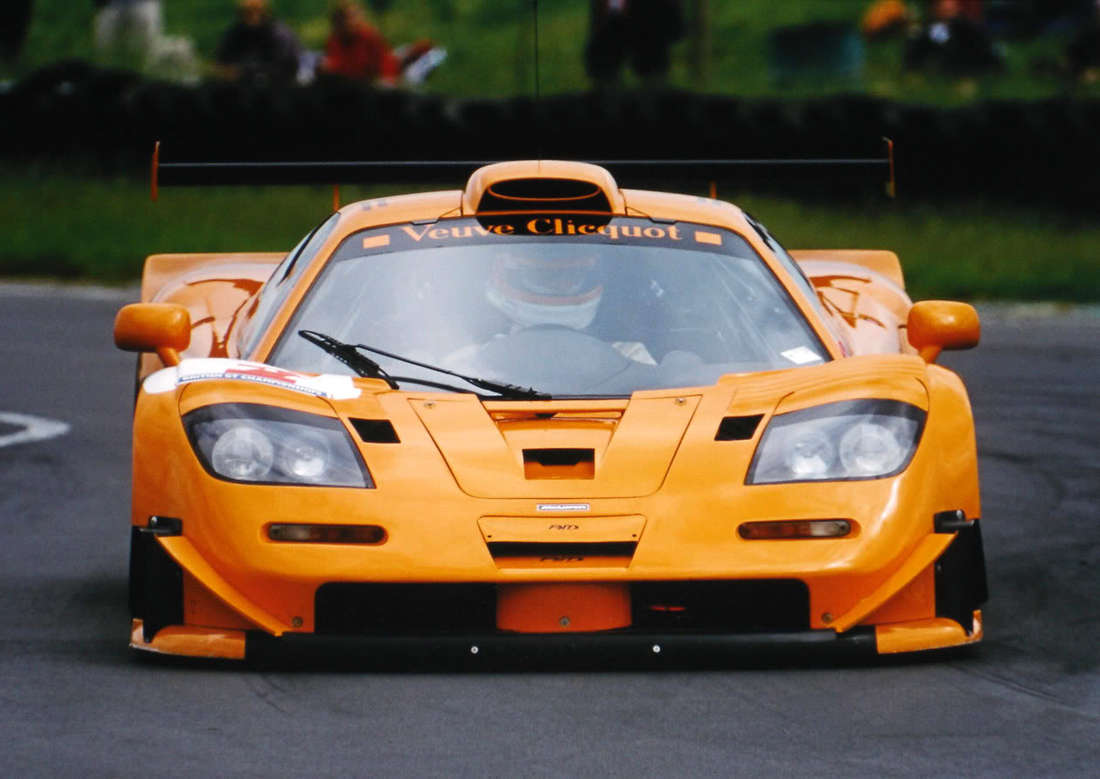None of that was by accident. From general layout to minor design touches, the McLaren F1 was dictated by the will of one remarkable engineer. And it came from a small, eminently focused company at the height of its power. By 1993, McLaren had won seven Formula 1 constructors’ championships and landed wins everywhere from Can-Am to the Indy 500. Gordon Murray, the F1’s chief designer, had come to McLaren after a stint at Brabham, where he drew two title-winning Formula 1 cars. In Woking, he co-designed the McLaren that gave Ayrton Senna his first F1 championship.
|
THE LAST GREAT ANALOG CAR WAS BUILT, in 107 examples, between 1992 and 1998. The roadgoing version had a world-first carbon-fiber frame; a 627-hp, 7500-rpm BMW V-12; a six-speed manual gearbox; and a driver’s seat mounted in the middle, aping an open—wheel race car. You did not get anti-lock or power brakes, traction control, power steering, or anything resembling an electronic safety net, despite the fact that the car cost nearly $1 million at launch. (Or that most of those features were standard on cars costing far less.) What you did get was the fastest production car in history—231 mph— and one of the least compromised road machines ever built.
None of that was by accident. From general layout to minor design touches, the McLaren F1 was dictated by the will of one remarkable engineer. And it came from a small, eminently focused company at the height of its power. By 1993, McLaren had won seven Formula 1 constructors’ championships and landed wins everywhere from Can-Am to the Indy 500. Gordon Murray, the F1’s chief designer, had come to McLaren after a stint at Brabham, where he drew two title-winning Formula 1 cars. In Woking, he co-designed the McLaren that gave Ayrton Senna his first F1 championship.
tags: breed of speed , mclaren f1 , mclaren , nathan finneman , f1 gtr lm , gtr , race car, gordon murray , breedofspeed
Comments are closed.
|
///Categories
All
Archives
January 2024
|

 RSS Feed
RSS Feed